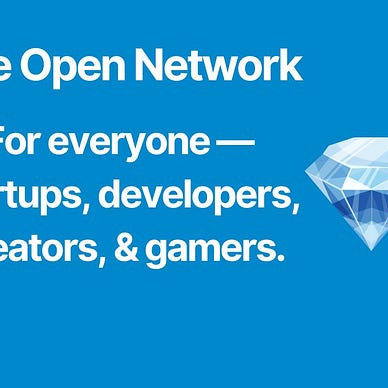Online Shopping
The new reality of consumer behavior in a digital environment
The scale at which commercial activities are being carried out in the world is always changing and ever-growing. Traditional business models like the brick-and-mortar rely on face-to-face interaction, physical presence, and possession or leasing of retail units, production factories, and warehouses for their operations. Today, online stores have replaced most brick-and-mortar businesses.
The internet has inspired innovation in many aspects of human activities. With the help of the internet, businesses are now operating on a global scale.
As we will see, the primary motive for the migration from brick-and-mortar to online stores is the cost-saving nature of eCommerce businesses. We are going to discuss setting up and optimizing an online store for growth. Before we do that, let us understand what an online store is.
Online Stores
An online store is an eCommerce storefront that allows consumers to buy goods and services directly from a seller over the internet using a web browser or mobile application.
Online shopping is the general term that refers to the activity of buying goods and services from an eCommerce store. By visiting the seller’s website or mobile application, consumers can find varieties of products that suit their interests.
To set up and run an online store requires a fair understanding of the eCommerce sector. These include the consumer, the product, payment, and delivery.
Customer Buying Behavior in a Digital Environment
A variety of factors directly influence consumer behavior in an online shopping environment. They include:
- Customer Reviews: Online shopping has made consumers more interactive. Reviews from consumers greatly influence other consumers’ buying decisions.
- Store Interactivity: Mobile devices are used to complete about 40% of eCommerce activities globally. eCommerce businesses should readily optimize their websites to be mobile-friendly. Some online stores offer better consumer experiences exclusively through their native mobile applications.
- Security & Trust: Online security, authentic payment methods, and overall brand worthiness are vital in building trust with consumers. They greatly influence consumer buying behavior.
Product Selection
In a traditional retail store, customers pick products according to their interests, fill their baskets and make payments at the counter.
Similarly, shopping in an eCommerce store requires customers to search for products using a shopping search engine on the retailer’s website or mobile application.
Once customers find a product that matches their interests, they can add it to their cart. At their convenience, they can proceed to checkout (pay for) the items present in their cart. They choose a payment method and also enter their billing/delivery information.
Payment
Choosing payment methods that are universally accessible and preferential to customers increases customer reach. Online stores typically accept payments through:
- Credit cards
- Debit cards
- Cash on delivery
- Gift cards (store specific)
- Cryptocurrencies
- Cheques
Product Delivery
Once customers pay for their products, the retailer ensures that the goods reach them through a variety of ways:
- Shipping: The goods can be shipped to the customer’s delivery address through retail package delivery by a public postal system. Also, a courier service like DHL, FedEx, UPS, or TNT can be used.
- Dropshipping: The seller can send the address of the customer to a third-party distributor or manufacturer who receives the order and ships the products directly to the customer. An effective way to save time and money.
- In-store Pick-up: The customer selects a local store and picks the delivered product at the selected location. Often used by bricks and clicks businesses.
Digital products are mostly delivered by emailing, downloading, or calling.
Setting Up Online Stores
Let us discuss some critical points to take note of when attempting to set up an online store.
Deciding What To Sell
There exist so many eCommerce stores selling products across a broad range of categories. Choosing a niche that you have extensive knowledge of will help you understand consumers’ interests.
Also, understanding peoples’ interests and knowing how to blend them with industry statistics will guide you in choosing products. It will also help you stay in the competition.
For some niches, product choices may vary with festive periods, age groups, seasons, and cultural backgrounds of their customers. For example, in the apparel niche, people prefer thick and warm clothes during winter than in the summer.
Find Out What Your Competition is Selling
Competition abounds in almost every aspect of life and is also the case of the eCommerce sector. Knowing what others in your niche are selling, how they are selling it, and to whom they are selling will help improve your understanding of the business. You can employ the services of a competitor analyzer in carrying out this sort of espionage. Using platforms like SEMrush, Ahrefs, or Ubersuggest, you can get valuable insights about what people are searching for in different locations in the world.
Similarly, platforms like Alexa or SimilarWeb can help you find competitors in your niche who may not necessarily show up in general search results but generate traffic.
Through these platforms, you can get information about your competition’s social media profiles, ongoing advertisement campaigns, traffic information, and audience base. Using these insights, you can attempt to either match or beat the competition.
Product Sourcing
Once you have chosen your niche and decided what you want to sell, you can start looking for products. There are many options you can choose from:
- Dropshipping: One of the best ways to start an online store and also expand the product catalog of an existing store is through dropshipping. Dropshipping eliminates the burden of inventory, packaging, or fulfillment of product orders. However, the competition is stronger as many of the products offered are readily available all over the internet. Using an eCommerce solution like Shopify, businesses can source products using Oberlo.
- Manufacturing the Product In-house: By crafting your products on your own, you will have full control over your brand. The downside of this approach is that it requires more time and energy.
- Working with a Manufacturer or Wholesaler: In other words, you are hiring a partner to develop your products. Although you will have the option to pursue a unique idea or sell products without spending too much time and energy, you may need to invest more financially. However, you can still have control over your brand and the quality of your product.
Depending on your brand, budget, and objectives regarding how you want to scale your business, you may use one or more of these options.
Get the Right eCommerce Solution
An eCommerce solution or platform allows businesses to build and manage online storefronts, providing everything a business needs to sell online, on social media, or in-person. You may want to read The Growth of eCommerce to understand the benefits of an eCommerce platform.
Among the many eCommerce platforms available online, the most common are Shopify, BigCommerce, WooCommerce, Volusion, Big Cartel, Ecwid, 3dcart.
Each of these platforms has its unique strengths. Depending on your needs, you may want to find out what each one does before making your choice. You should be looking at their flexibility, affordability, and fitness in your industry:
- Most eCommerce businesses that want to start quick and scale seamlessly overtime go for Shopify, BigCommerce, Volusion, or Ecwid.
- Woocommerce is the most popular eCommerce engine for online stores built using the WordPress CMS.
- Big Cartel helps artists and creators to set up online stores.
- For businesses looking to develop their eCommerce software, 3dcart is the way to go.
Promoting Online Stores
So you now have your store up and running, how do you reach customers and more? For the better part, we will stick with:
Advertisement Campaigns
Create online marketing campaigns so the right people can see your store. Advertisement is an effective way to let people know about your business regardless of how it operates, online or offline.
Depending on your target audience and the scale at which you want customers to notice your business, you can choose from Google Adwords, Facebook Ads, or Instagram Ads. With an eCommerce platform like Shopify, you can leverage Google Smart Shopping campaigns. Smart Shopping lets you run effective Google campaigns without being familiar with advanced ad settings.
Selling at Discount Prices
Most people love to buy at affordable prices. Even the very wealthy people are always trying to minimize costs and get something at a price that does not make them lose weight.
A majority of online shoppers spend at least some time to compare product prices in different stores before making a purchase. Price is just one of the factors that customers look at when making a purchase. However, it is also something that they take into serious consideration.
Offering product discounts in your store, especially during festive seasons and holidays are a great way to attract customers. You can also offer coupons to new customers to increase engagement or to your favorite customers to keep them coming.
Providing Valuable Content About Your Products
Reach your ideal customers with rich content about your business through SEO and on social media.
Publishing blog articles on your website and reviewing your products can develop trust with your customers and boost store traffic. Most eCommerce solutions automate this process for you.
Conclusion
Today, online stores are replacing most brick-and-mortar businesses. It is very obvious, especially in places where internet penetration and the rate of adoption of technology are high. Consumers are naturally attracted to online shopping because:
- It is more convenient.
- There is a broader product range and selection.
- Product prices are more competitive.
- Consumer buying decisions are influenced by other consumers.
Before attempting to set up an online store, it is necessary to have an understanding of the eCommerce sector and the steps to take when optimizing your business for profit and ensuring sustainability amidst the competition.
👉 Follow me, Fru Kerick.
👉 Subscribe so that you never miss a story.
👉 Save $10 on your Medium membership. Read unlimited stories. Thank me later…



